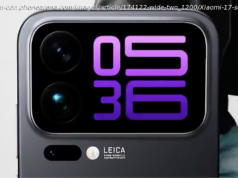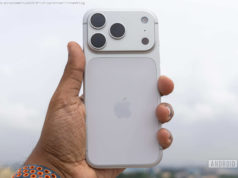NBC’s new Snapchat news show is a glimpse into how young folks want their news—quick, fast and in their language.
Embed
Share
HERMOSA BEACH, Calif. — We may have seen the future of video news this week, and we like it.
This is a good thing.
If we want to get the next generation watching news, this could be the way to do it.
Hire two young hosts, put them in hip attire, use language that assumes you know very little (“O. J. Simpson became famous for pushing yards on a football field”) have fast-moving graphics, quick cuts and split screens, eliminate lengthy sound bites and tell young folks the essence of the story.
And it works.
The episodes I watched were five minutes in length, with five stories each (roughly 60 seconds a piece) .
That’s about on par with most made-for-web video, which assumes that people’s attention spans won’ t last much longer than a minute before clicking away.
Television networks have not so much been losing young viewers for news, as opposed to just never getting them in the first place.
The stories NBC selected this week have been mainstream — from President Donald Trump’s outburst against Attorney General Jeff Sessions, Sen. John McCain’s brain cancer announcement, the pending parole release of Simpson and the suicide of Linkin Park’s lead singer.
But when it comes to news on Snapchat, the young folks who use the app like the news, if it’s presented in a way they understand.
On Snapchat, «news is straight to the point, ” says Luisa Domingeuz, 21, a Snapchat user from Brazil. “You look there and find out what you want to know in a short period of time.”
Beyond Snapchat, she catches up with news on Facebook and MSN, period.
The advantage of watching news on Snapchat “is it’s quick, ” says Brad Black, 34, who works at a Los Angeles hospital. “You don’ t have to wait for the news people to say, ‘And coming up next, we’ ll tell about the next story.’ It’s really accessible.”
Beyond the flashy graphics, we like Snap’s approach to storytelling, which could teach us a lot about how to communicate in all walks of life. Tell us what we need to know in quick, easy to understand bites, and you’ ll get and keep our attention.
Our audio version of this story can be heard here.
— No Alexa, you can’t call 911. Really. A New Mexico sheriff thanked Alexa for calling 911 and sending cops to the scene of a crime, but the odds of that happening are remote, as we explained this week. Amazon hasn’t programmed Alexa to make emergency calls. The sheriff had a press conference on Facebook to address the controversy, and released the 911 recording of the victim screaming for Alexa. Our guess? Yes, she asked for Alexa, but someone else in the house placed the call to 911.
— Hyperloop may be really coming. That crazy idea from Tesla founder Elon Musk might actually become a reality. Musk claimed Thursday he received «verbal» government approval to build an ultra-high-speed underground rail system in the Northeast, offering hope to travelers overwhelmed by mass-transit failures despite skepticism. Go in a tunnel and get whisked from New York City to Washington, D. C., in 29 minutes. Who’s in?
— Google’s updated search app looks a lot like Facebook. The Google search app — not to be confused with so many other apps like Google Maps, Google Trips, Google Photos, Google Translate, Google assistant, Google’s YouTube app and more — got a big update. Beyond the search bar on top, you get weather reports and cards at the bottom of the screen with news headlines based on your interests.
This replaces the little used Google Now, which required some swiping on the screen to find the articles. Now they’ re at the bottom of the screen. The app is nice, but many of us already use the Chrome app on smartphones or the Google Assistant app for text- or voice-based search.
The Google app isn’ t anywhere as popular as some other Google apps. Google search is currently No. 40 on Apple’s most downloaded app chart, while Google’s YouTube is No. 1; Maps, No. 9; Gmail, No. 14; and Chrome, No. 28.
In other Google news, Google Glass, the once touted and controversial augmented reality spectacles are back, but not for consumers. Google announced that companies like GE, DHL and Boeing have been using it and that it’s now available to other firms as well. Sign-ups here:
— Facebook’s scheme to sell news. Facebook’s head of news partnerships said the social network was building a tool allowing publishers to offer paid subscriptions.
Newspapers have been losing subscribers in the digital age, and many are upset about giving away their articles for free on Facebook. Campbell Brown said Facebook would start testing with a small group of partners later this year.
— Bixby launches, and she’s no Siri. Samsung’s answer to Alexa, Siri, Cortana and other digital assistants finally launched this week for Galaxy S8 and S8-Plus smartphones, and it didn’t go well. Samsung hastily scrubbed the descriptions of male and female voices for Bixby after users pointed out describing a woman’s voice as «chipper» and «cheerful» and a male voice as «assertive» «confident» played into well-worn gender stereotypes.
— Hot Dog! Have you seen that dancing Hot Dog in your social media feed? Get ready for way more augmented reality characters to come your way, courtesy of Snapchat and Apple.
— Should we be scared of robots? Musk is scared of letting artificial intelligence run wild, and a future where robots turn on humans. Sounds like the stuff of science fiction, right?
— How to get emergency help from Alexa. You can’t have Alexa call 911, but there is an Alexa skill to get help, and down the road, We introduce you to the Ask My Buddy skill for Alexa and Google Home.
— Google’s search app update. It takes the best of features in other Google apps and melds into something that looks like Facebook. But is that enough to wean you off the Social Network?
— We really, really can’t call 911 on Alexa.






